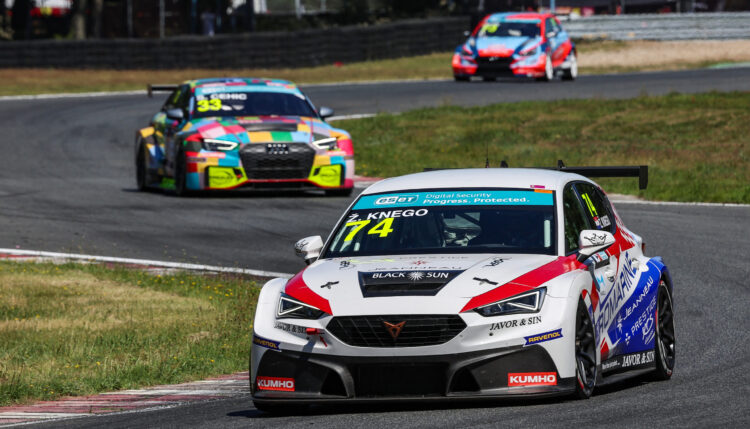Blog
Grobnik circuit in Croatia is a very special track. It might be an old-school circuit with slightly out-of-date facilities, but that’s the special thing about this place. We talked with Žarko Knego from Auto Klub Dubrovnik about racing at his home circuit.
“For me, it is quite important that Grobnik is part of the TCR Eastern Europe championship. By having a race in my country, I am able to promote racing even more and all of my fans, friends, and sponsors are able to come to this race in order to see some good live racing, not just on TV,” said Knego. He knows that the facilities aren’t modern, but that shouldn’t bother anyone.
“Although the infrastructure of this track is not at the same level as Hungaroring, Red Bull Ring, or Slovakia Ring, we still have some nice things to offer: new asphalt, which was done a few years ago, small but significant investments in the track’s infrastructure and, most importantly, nice weather and a beautiful nearby coast that all competitors and teams are able to enjoy.”
The track was built in 1978 for the Motorcycle World Championship and it hosted that famous competition for another eleven years. After that, no investments were made into the track. “But in the last few years, that has changed. Slowly, the management has begun to invest in and improve the track. The biggest improvements have been the laying of new asphalt, which was done according to FIA regulations, and the addition of new kerbs, which are now much “gentler.” The previous surface was very aggressive and cars often couldn’t finish a race without a tyre puncture. Now this has been changed and the track is good enough for racing at any level. As it was originally designed for motorcycles, it has some interesting turns and there are a few points on the track where you can make significant gains if you take the right line, but you could also lose a lot of time if you miss the ideal line. Sometimes the ideal racing line is not the one that everyone would take, especially in turns 5 and 10. For me, the trickiest parts are turns 2, 7, and 8 because the cars are going at high speeds and any small mistake will likely result in going out of the track and into the gravel or even crashing into the barriers,” continued Knego.
“The track is quite fast compared to others in the calendar and it is counter-clockwise, so your left front tyre takes a lot of pressure and, if you don’t have the right tyre pressure and setup, the tyre might degrade very early in the race, which will affect your result.”
The weather also plays an important role, points out Knego: “Grobnik is well-known for its high temperatures during the summer, which can go up to 40 degrees. But the weather can also be quite unstable – there could be heavy showers and, in 30 minutes, the sun can be shining again with high temperatures.”
Žarko Knego has raced at Grobnik many times and has a lot of memories about the track. So what is his best memory of racing there? Well, there are few: “I had a good race in 2019. During the practice round on Friday, I had a serious crash into the barriers and the car was significantly damaged. We were not able to repair it and I was just about to inform the promoter that I would not be taking part in the race. However, my colleague from AK Dubrovnik Racing club, Zoran Kotromanovic had just purchased the same car as me and he lent me his car to use in the race. The race was on Saturday and in extreme conditions – it was the heaviest rain that I have ever experienced during a race. Due to the rain, we started behind the safety car. I was in 10th position and, eventually, I finished in 5th. That was a good result, taking into consideration the crash that had occurred the day before, the heavy rain during the race, and the fact that I was driving a borrowed car.“





